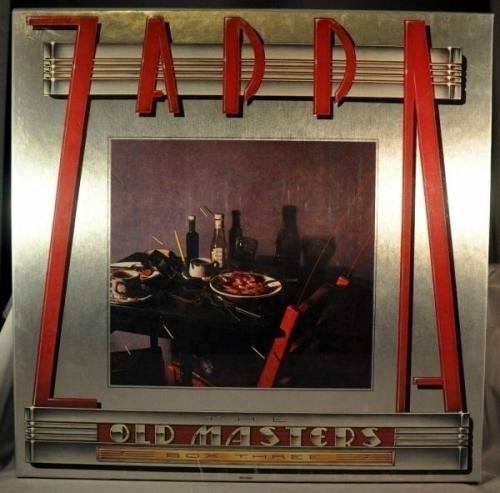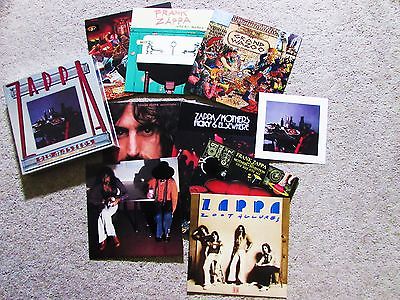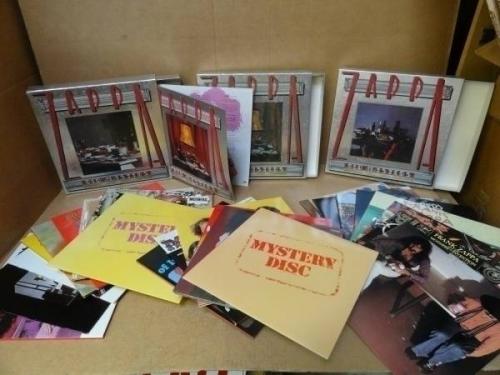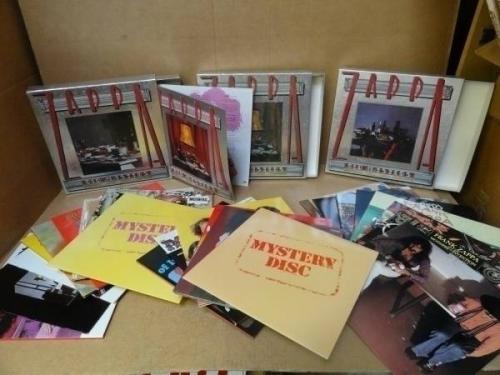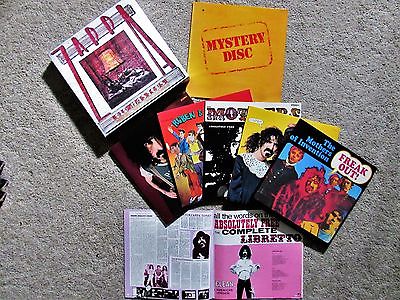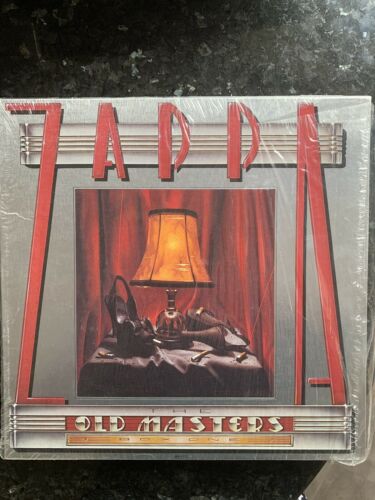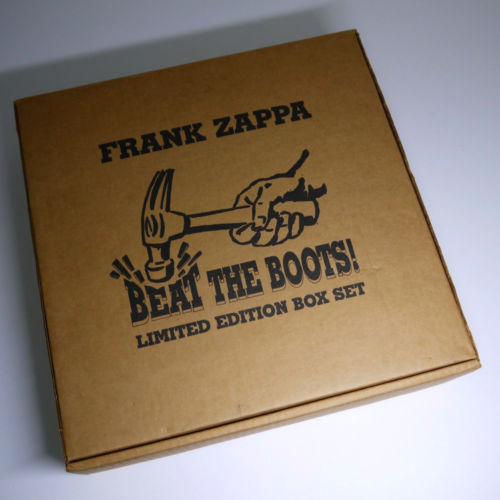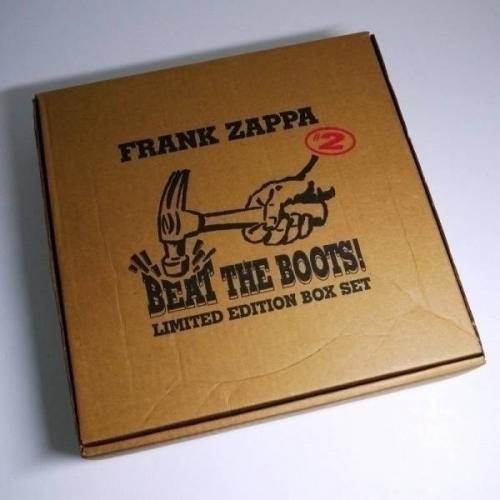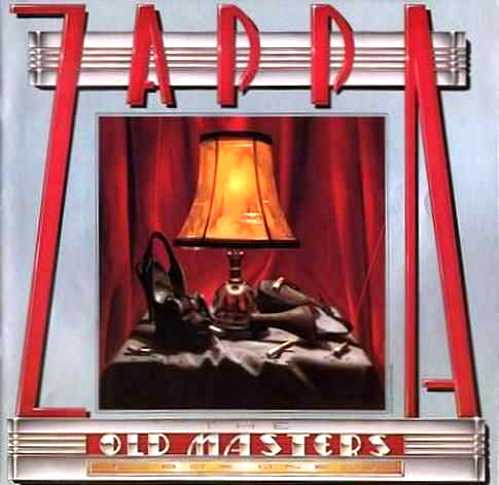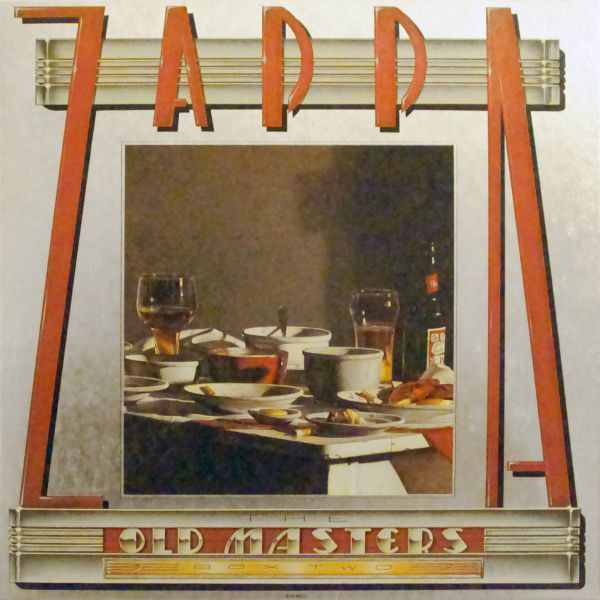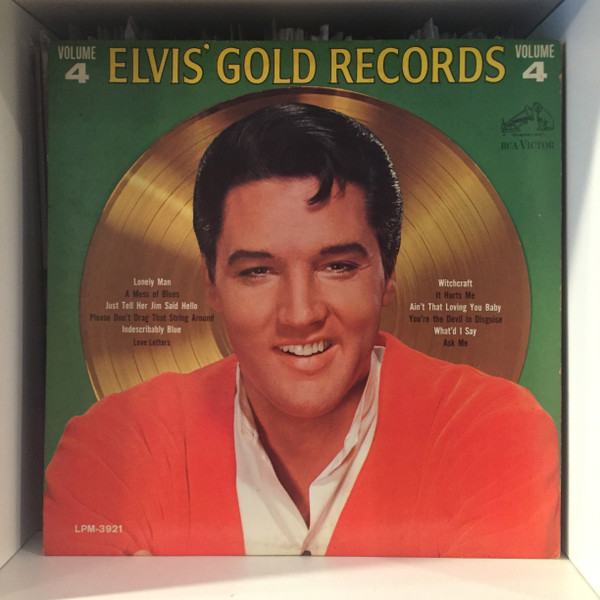Frank Zappa The Old Masters Box Three Orig. Sealed 1987 Nine 9 Vinyl Records
This item have been sold for $ 382.49
Item Description
All Vinyl items up for auction are from Pert s store, Frank s Music Collectibles and the wholesale outlet, Frank s Music Distributors from the 1980 s and 1990 s.
All vinyl records were placed in plastic sleeves to protect the cardboard sleeves.
We imported vinyl from Japan, Europe and UK as most items were shipped to us with no shrink wrap as US record company s covering, thus protecting the cardboard sleeve. Most Japanese records had an open poly vinyl thin bag that provided protection, but still was unsealed while being brand new . Some Japanese Records were heated shrink wrap plastic like US Record releases with a R or T within a white square only on the back plastic shrink wrap to protect and signify Factory Sealed Records. When Import Records arrived naked or unprotected, we would place the items/records in unheated shrink wrap plastic wrap without shrinking heating the plastic. This would protect the item from any shop wear . All of our vinyl that is listed as Still Sealed New - Mint minus is in fact unplayed, untouched and in the exact condition we received the item from the country of origin went shipped in the 80 s and 90 s.
Imports had their own specific locations in record stores in the 70 s and 80 s and were collectible to the fans as they could have different covers/jackets, tracks or bonus tracks. We would like to invigorate the Import high that is no longer influencing the minds and wallets of the music buying public. Please write and give me your thoughts on Imports and let me know what YOU think...thanks
Please ask us any questions concerning the vinyl items we are now posting for sale Most are truly One-Of-A-Kind in the stated condition and issue .. PBN
The Old Masters BOX Three
The Old Masters, Box Three Includes:
Waka/Jawaka, The Grand Wazoo, Over-Nite Sensation, Apostrophe , Roxy Elsewhere, One Size Fits All, Bongo Fury, Zoot Allures.
Barking Pumpkin 99999 9 LPs ADA
Limited Edition
FREE USPS MEDIA MAIL Shipping with Full Insurance or
12.00 Credit provided as discount for any other shipping method wanted Domestic or International
Deluxe is definitely the word for The Old Masters:
The original covers are reproduced, gatefolds and all, in all of designer Cal Schenkel s demented glory.
Even the type has been reset to exactly match the original specifications.
Catalog Number BPR-9999
Original Sealed 12 US Remastered Vinyl Pressed Records x9
12 Vinyl Records x9 Catalog Number BPR-9999 Frank Zappa Issue on Barking Pumpkin Records
Waka/Jawaka - original album released in 1972 BPR 9999-1 Out Of Print OOP
The Grand Wazoo - original album released in 1972 BPR 9999-2 Out Of Print OOP
Over-Nite Sensation - original album released in 1972 BPR 9999-3 Out Of Print OOP
Apostrophe - original album released in 1974 BPR 9999-4 Out Of Print OOP
Roxy Elsewhere - original Double Album released in 1974 BPR 9999-5 four sides Out Of Print OOP
One Size Fits All - original album released in 1975 BPR 9999-6 Out Of Print OOP
Bongo Fury - original album released in 1975 BPR 9999-7 Out Of Print OOP
Zoot Allures - original album released in 1976 BPR 9999-8 Out Of Print OOP
Copied from: Stereophile Vol.12 No.6, June 1989
The Old Masters, Box Three Includes Waka/Jawaka, The Grand Wazoo, Over-Nite Sensation, Apostrophe , Roxy Elsewhere, One Size Fits All, Bongo Fury, Zoot Allures. Barking Pumpkin 99999 9 LPs . ADA
Deluxe is definitely the word for The Old Masters: The original covers are reproduced, gatefolds and all, in all of designer Cal Schenkel s demented glory. Even the type has been reset to exactly match the original specifications.
The Old Masters, Box Three
Waka/Jawaka The Grand Wazoo: Scant months after Just Another Band from L.A. hit the bins in 72, Zappa released these two albums, both products of the same extended big-band studio sessions. After a tumultuous beginning, Big Swifty, which takes up all of side 1 of Waka, settles into a thick, loping gumbo of an electric jam with long, languid brass and woodwind themes overlaying the guitar, bass, and drums Zappa, Erroneous , and Dunbar . This remains some of Zappa s most thickly textured, satisfying electric music, repaying many hearings. The title cut is even more interesting, chorus after chorus of brass layered in chiming grandeur, with Sal Marquez s meticulously muted trumpet solo played simultaneously with solos by guitarists FZ and Denny Walley.
The original Waka was an engineer s nightmare, endless overdubs thickening the sound, the resultant mucho tape hiss flattening and leveling everything. Crispness? Highs? Articulation? Forget it. Boxy to the max. The hiss is pretty much gone on the OM LP, but the entire frequency range seems to have shifted up an octave or so, as if someone had just turned the treble knob all the way to 10. The mix s formerly dark mystery is history, side 1 s bass is gone, side 2 s vocals are hissy, and the cymbals are splashy and tizzy. I was struck once again by how much an emphasized high end can create the illusion of a quickened tempo. But the timpani on the fade-out of Swifty are now heard clearly for the first time, the title cut s brass choirs are clearly laid out for delectation, the bass clarinet part on the fade was new to me, and Don Preston s piano is given a much brighter spotlight on the OM. The Ryko CD s highs are even more brilliant than the new LP, but the latter is just that much more believable as a multi-mono d studio facsimile of big-band sound. The CD does, however, restore the original s bass---and then some. Erroneous sounds better than ever.
The three issues of Wazoo remain the closest in sound of any of this welter of releases, the CD having just a bit more air than the original, and fuller bass. But even the CD sounds veiled and muddy compared to the new LP, which is the best of the three by a nose not Zappa s , though it slightly lacks the bass of the other two.
Over-Nite Sensation: The CD and digitized LP are very close, the former a fraction of a degree better in air and spaciousness, without losing the original s depth to digital flatness. Yes, there s more clarity, but I miss the original s full, fat, punchy, if somewhat fuzzy bass. Kick-drum on the new versions is merely thick, not rounded flat and fast, but not bulbous background vocals on both new formats are shrill and harsh, without the depth of field particularly on Dyna-Moe Humm of the original DiscReet release.
Apostrophe : Repeated listening to this one since my Vol.10 No.8 review has tilted me back in the direction of the 74 DiscReet release, for the same ol analogyous reasons that have become a refrain in this article: punchier bass, more believable highs. The LP highs sound real, whereas the CD sounds over-magnified, like looking at a mountain from 50 miles away without the intervening atmospheric haze which, though admittedly obscuring, does allow one to gauge the distance. In short, the haze renders space visible by, to a small degree, filling it. The paradox results in a greater illusion of space and distance. The CD is definitely the poor cousin here.
Roxy Elsewhere: One seldom associates the phrase intimate club date with Frank Zappa, but in late 73, LA s Roxy provided a cozy venue for this, probably the strongest line-up of musicians FZ ever assembled on stage. The 11-piece band consisted of FZ and Jeff Simmons on guitars, Tom Fowler on bass, George Duke and Don Preston on keyboards, Ruth Underwood on percussion, Ralph Humphries and Chester Thompson on drums, and Napoleon Murphy Brock and Bruce and Walt Fowler on horns. The album, with its successor One Size Fits All, is one of FZ s two prime examples of what can be accomplished by a tight, working rock/jazz band of rather eccentric proportions.
There s lots here, half of it instrumental. Highlights are Echidna s Arf Of You , Don t You Ever Wash That Thing?, and the first part of Be-Bop Tango. Not so much a bag of guitar solos, Roxy showcases live ensemble work of such density and rivet-tightness as to sometimes beggar belief. In Wash That Thing, listen to Tom Fowler s bass parts, brother Mother Bruce s near-certifiable trombone solo and an even better one on Tango , George Duke s strong, melancholy electric piano, and the percussion/horn unisons throughout the album---all taken at breakneck speeds. Underwood is a xylophonist of awesome technique, and Brock s vocals lend the whole affair a humanizing touch of soulful class that later FZ frontman Ike Willis has never been able to match. And again, on Tango, Duke s simultaneous perverto-be-bop piano/vocal scatting, complete with quotes from Straight, No Chaser, are a delight. The band s talent fairly leaps out of the grooves their sheer exuberance at making music at the level demanded by Zappa is overwhelming.
Then, of course, there s Cheepnis, one of the most-requested encores of middle-period Zappa. A 41/2-minute pastiche of every 50s grade-X sci-fi movie-music cliche in the book, it s probably the fastest, funniest, breath-stealingest song he ever wrote. And punchy? The band is wound up tighter than a slamdancer on PCP. But all is not perfect: Trouble Every Day s political bite is blunted and trivialized by over-literal cartoon sound effects, and the improvised Dummy Up is less than inspired.
The original 1974 DiscReet release had a warm, rich roundness to the sound, and was excellent in most particulars except for some badly miked timpani . It was certainly closer to the sound of the band in concert than the rather desiccated OM reissue, which lacks body and weight. Zappa s sonic tastes these days seem more austere than before, now emphasizing the revelation of detail---horn parts have a little more air, are more easily dissected in the digital remastering---over the general feel of those instruments as sounds in three dimensions. Again, we re given a schematic of the music, as speciously exact as a Xerox that, by dropping out the background texture of the original, only seems like an improvement.
One Size Fits All: This underrated 1975 release is probably FZ s best all-around hard rock album---the songs are clever, intricately structured, and flawlessly, impeccably rock-solid, full of irresistible hooks and power riffs---stuff any rocker can sink his teeth into, with many Holidays For Air Guitar.
The opening Inca Roads contains one of FZ s best guitar solos: stately, perfectly structured. Can t Afford No Shoes, one of the funnier heavy-metal tunes you ll ever hear, manages to change key 18 times I counted in the chorus alone. Sofa, another of FZ s gospelly Pomp Circumstance processionals, has grandeur and mystical lyrics in German: Ich bin der Chrome Dinette, usw. . Po-Jama People has more tightly sprung rhythms from George Duke, Tom Fowler, and Chester Thompson who went on to drum for Weather Report , and San Ber dino and Andy feature Zappa s slide guitar and Bloodshot Rollin Red Capt. Beefheart on harp. But students of formal structure should pay particular attention to Florentine Pogen, a case-study in Zappian compositional technique: in short order he states half a dozen motifs including the obligatory Louie Louie quote , then spends the rest of the song mixing, matching, rearranging, and reorchestrating them. The more I listen to this song, the more fascinating it becomes. The lyrics are impenetrable---the tune demands attention, then just sits there, a craggy, imposing monument to itself. All in all, a great rock album by any set of standards except for sincere, vulnerable lyrics .
There has never been more satisfying bass on any FZ album, for musical and sonic reasons. On the Ryko CD, the bass is even more sumptuous: the articulation of bass guitar is both crystalline and deep, and there are bass- and kick-drum and low synthesizer notes I haven t heard before. I kept thinking my fiancee was banging on her ceiling for me to turn down the volume to 9...but she wasn t home. The OM LP is also a definite improvement over the original DiscReet release: highs are better defined, bass is more fluid and full, and the various soundstages, true or false, are deeper, more convincing. Plus, the disc mastering is a lot better---an Inca Roads passage my stylus always refused to track on the overmastered original is here sailed through effortlessly, with improved dynamics. Kick-drums are mixed a little more forward, Keith Moon-sized on Florentine Pogen, and George Duke s synthesizer extravaganza becomes a tour de force of strange sounds in space. Duke s acoustic piano on Po-Jama sounds more natural here though I miss the bright, percussive bite of the original . All in all, little difference between new LP and CD, though the latter has that extra soupcon of bass and drum articulation. Great remastering job, Bob Stone.
Bongo Fury: A roadhouse blues album infused with the spirits of William S. Burroughs and Howling Wolf, this mostly live-in-Austin 1975 album features Captain Beefheart on vocals, harp, and shopping bags. Probably the funkiest LP FZ ever made, Bongo Fury is the road album Chunga tried---and failed---to be.
Beefheart makes much of the difference. The unassailable authority of his voice and harp lend a dark, bitter sincerity generally lacking in Zappa s work. Also, the Beefheart pieces--- Sam With the Showing Scalp Flat Top and Man With the Woman Head ---are two of his better psychoto-beat ruminations. Zappa himself rises to the occasion with Debra Kadabra, a tune I thought for years was Beefheart s, so exactly does FZ ape the Good Captain s style besides, Beefheart sings it .
Advance Romance is a long, slow blues about light-fingered road ladies, and was still a concert standby as late as 84. The band has a great time, George Duke and Napoleon Murphy Brock trading off licks from a bottomless well of call-and-response blues cliches, and stuttering out an absorbing stop-action chorus. Then there s Carolina Hard-Core Ecstasy, a noble paean to S M shoe fetishing, and Muffin Man, Zappa s rave-up, concert-closing riffer for years and years. But perhaps the most important aspect of this album is drummer Terry Bozzio s debut. Bozzio set the tone for Zappa drummers to this day: melodic, endlessly creative fills and counterrhythms, and equal ease in rock and jazz settings. Listen to his rolls on Advance Romance, his fills on Man With the Woman Head. Denny Walley s slide guitar, too, enriches the already full blues mix throughout.
The main difference between the DiscReet and OM versions is the latter s added clarity and air in the highs, making vocals, horns, and background band and audience sounds easier to distinguish. For once, the OM version adds a little to and takes away nothing from the already quite acceptable original. Zoot Allures: When this one came out sometime in 1976, it had been at least a year since Bongo Fury, itself a bit of a disappointment after the stellar One Size Fits All. There had been rumors of problems with manager Herb Cohen s DiscReet label and/or distributor Warner Bros., and these rumors seemed confirmed by the long delay from the usually prolific Zappa and the fact that the standard Warners Bros. label, not the DiscReet logo, appeared on Zoot Allures. The music, too, sounded tired, dispirited, bloodless, a stopgap measure---in hindsight, it still does.
FZ tried for a different sort of sound on Zoot Allures where the previous two albums had a full, fat, punchy rock-band sound, Zoot sounded desiccated, over-filtered, harsh and flat at the same time, with very artificial-sounding treble and foofy, indistinct bass. And the record just plodded along, eight of the nine tracks being medium-slow in tempo, the lyrics uninspired, the tunes with two exceptions the same. Much of the album was FZ on all instruments except drums Terry Bozzio and background vocals was this what happened when Zappa was left to his own studio devices? Easy to think so when the two best cuts, Black Napkins and the title track, are the only actual band tracks.
Black Napkins has since become an FZ standard, and rightly so---this elegant, simple, lonely melody is a quintessential guitar lament. Zoot Allures is a study in sustained tones and surprising chord changes, with always-interesting bass lines by Dave Parlato, while Friendly Little Finger blends middle-eastern-style guitarro metallico with a touch of Bringing In the Sheaves. But it s when FZ begins to sing that Zoot Allures begins its downhill slide. This is one of Zappa s most misogynistic LPs, with what sounds like prolonged sexual torture of a young woman in the 10-minute The Torture Never Stops, the paean to a 69.95 sex doll in Ms. Pinky, and the greasy wars of sexual conquest described in Disco Boy which closes with a riff borrowed from the Beatles You Never Give Me Your Money . True, FZ focuses on the male perpetrators, who come out looking anything but admirable, but the whole thing leaves a foul taste in the mouth, Zappa s tired humor trying to sound thoroughly nasty but succeeding only in sounding forced and self-serving.
The distinctively chiming guitar sound that FZ developed for this album is well served by the digital remastering, as is all of side 2, which now sounds like an honest-to-god rock band instead of a bunch of tracks laid atop one another. The improvement is most obvious on Ms. Pinky, in which the heavily reverb d, deliberately artificial-sounding background vocals are given much greater depth, and the interesting snare drum part is much more clearly audible. Find Her Finer is far superior in the remastering, the treble tamed, the bass rounder, fuller, kick-drum more immediate. This is even more true of Friendly Little Finger, in which bass, drums, and FZ s lead guitar are all gutsier, more like a live band. I could be wrong, but it does sound as if you can hear the studio walls during the closing guitar solo. Lu Ann Neil s concert harp part on the title cut is fully audible for the first time, and the bass synthesizer notes on Disco Boy are a revelation If you re going to listen to Zoot Allures at all, the remastered OM version is by far and away the one to choose it has lost nothing, and gained much.
Conclusion:
Well. After all these column inches, do I unhesitatingly recommend The Old Masters? A few years ago, I would have, but Zappa has by now released so many of these albums on Ryko CDs that only collectors with the hardest of cores could justify spending an average of 12 an LP for audiophile editions of decidedly non-audiophile recordings. However, as 11 of these discs remain unavailable in any other way as of the time of writing , it might not seem such a bad deal after all.
Those whose mouths are already watering should know that these are limited editions as FZ s back catalog continues to be released on CD, it s increasingly likely that The Old Masters will be discontinued. That would be too bad for once, the well-worn phrase collector s item is more than justified. And, as any true collector knows, these boxes are worth it for the covers alone even those who hate Zappa s music admit that his album-cover art has ranked consistently among the best. But for those who, as Zappa said in 1971, know what we re doing,...and are getting off on it beyond his/her wildest comprehensions, The Old Masters are a fitting, lovingly produced, self-erected monument to one of the most original manipulators of rock media. Congrats, Frank.
OBITUARY taken from:
From Stereophile Vol.17 No.2, February 1994
Frank Zappa was a unique figure in the worlds of American popular music, international contemporary music, pop culture, politics, civil libertarianism, and, toward the end of his life, international politics and business as well. When he died of prostate cancer on December 4, 1993, at the age of 52, he was mourned not only by musicians and fans, but by such luminaries as NPR s Daniel Schorr and the President of the Czech Republic, Vaclav Havel, who remembered him as one of the gods of the Czech underground during the 1970s and 80s.
I first heard Zappa s music in the fall of 1967, just after the Summer of Love, the release of the Beatles Sgt. Pepper s Lonely Hearts Club Band, and the birth of the media hippie. A budding 17-year-old hippie myself, I was shocked and delighted by his just-released album We re Only In It for the Money, probably his most pointed essay in cultural criticism. That was a clearly polarized time---the unexamined truisms from both sides of the generational fence were spouted with a single-minded sincerity and a naivete that seem almost touching today. Zappa s voice, on the other hand, was one of clarifying irony and sarcasm, the voice of an experienced, mature adult who took no one s word for anything.
Money s album cover was a black satire of the cover of Sgt. Pepper itself---something that verged on sacrilege at that time of LSD-drenched Beatleolatry. But We re Only In It for the Money was not only a critique of the vague fatuities of the hippie subculture it also roasted an establishment that found itself terrified by that subculture and attempted to suppress it by increasingly violent means. The cycle climaxed three years later at Kent State University in shootings eerily foretold by Zappa on this very record.
We were weary even then of the dire pronouncements of our parents and authority figures about the dark side of the strange and contradictory melange of leftist politics, free love, communal living, psychedelics, alternative healing techniques, political theater, Native American lore, exotic diets, and the various occult and spiritual disciplines in which many of us dabbled and which a few of us even studied. Zappa was just as critical, but his was criticism from the inside, from one of us. When I first heard him shout Flower power sucks ---this was in 1967, remember---my spine stiffened in shock and recognition. The whole gestalt---everything that went with the phrase flower power ---had never been questioned by anyone my teenaged psyche trusted or respected, and certainly by no one with hair as long as Zappa s. His derisive shout made me question everything I had refused to question, and permanently derailed my hitherto blithe and paisley train of thought.
Zappa s call to question authority---no matter how hip---was a constant of his work from the very beginning. He played both political ends against a cultural middle he held in withering contempt, and vice versa. Beginning in 1965 by pillorying on Freak Out greaser and doo-wop music both of which he loved , along with warning us to Watch the Nazis run your town, asking the rhetorical question Who are the Brain Police?, and singing the first rock song I know of to attack the media Trouble Every Day, about the Watts Riots , his list of targets eventually grew to include psychedelic music, disco, punk, white blues, Democrats, Republicans, the Christian Right, the extremes of both gays and homophobes, and most important, anything and anyone anywhere who threatened free speech and the Bill of Rights. During his last two tours he set up voter-registration booths in the lobbies and managed to encourage tens of thousands of concert-goers to register. At least one group of community powers-that-were prohibited him from doing so, grumbling that we already have enough voters. He was about to make a serious bid for the presidency when his long-misdiagnosed cancer finally caught up with him.
Ever a gadfly to the establishment and to his own constituency---the young, the hip, the disaffected---Zappa knew that there s no one so conservative or conformist as a teenager, regardless of that teenager s dress or political beliefs. One of the strangest and most revealing moments on any Zappa album comes at the end of the live section of Little House I Used To Live In on Burnt Weeny Sandwich. Zappa announces to the crowd that Everybody in this room is wearing a uniform and don t you forget it. What sounds like every single person in the room then bursts into delirious applause.
Why? Zappa had just accused every one of them of being programmed robots marching in a lockstep media army of long hair, drug abuse contrary to popular belief, Zappa himself never took drugs other than caffeine and nicotine , and a borrowed hip argot. But no one, evidently, was offended. Perhaps all the acclaim was embarrassment, the shock of recognition immediately recycled into laughter at oneself.
I don t think so. Having been part of other such moments at other Zappa concerts, I think he included these few seconds on his record to make a far more disturbing point: That in a culture in which free speech is taken for granted as a birthright instead of being valued as a precious privilege earned, it loses that value. Anything that anyone might say or write becomes just another glittering fragment in a vast and hypnotizing kaleidoscope of entertainment. With increasing bitterness as the years went on, Zappa made a point of referring to everything he did as just entertainment ---a way of ensuring that he never took himself too seriously, but also an indicator of his cynicism. I can t think of any other American rock musician of whose work the word entertainment is less descriptive.
But Zappa would ve been little more than another shrill voice in the vast wasteland had all this exhortation not been supported by a uniquely powerful musical voice. Zappa scavenged the pop music of America and the avant-garde of Europe to create a music of non-sequitur, a shotgun cubist marriage of doo-wop, serialism, fusion, crudely effective Brechtian agit-prop, Varesian electronics, and good ol rock n roll. He reveled in the jarring juxtaposition, the transition without segue, the 90-degree curve. He shared with Igor Stravinsky and Anton Webern an abhorrence of sentiment and a commitment to what he called statistical density : ie, a maximum amount of aesthetic information in a minimum amount of time.
Zappa s orchestral and chamber music could thus sound most chaotic to the majority of his rock fans when it was actually at its most rigorously disciplined. But then, at its best, his rock music could sound similarly incomprehensible to the ear attuned only to the sounds of the conservatory and the recital hall. Zappa was virtually unique in creating not only some of the most rhythmically thorny orchestral scores ever written---as such conductors as Pierre Boulez, Kent Nagano, and Peter Rundel have attested---but also some of the most challenging rock music ever composed and performed. In fact, among serious rock instrumentalists it became the ultimate badge of honor to have played in one of Zappa s bands. Like Miles Davis, Zappa had an uncanny ability to demand from a player that player s best---and get it every time.
As if fighting against time---he was---Zappa released recordings at a furious pace in his last few years: over 30 CDs worth of previously unreleased material, much of it his best work. His last album, The Yellow Shark, a collection of works for chamber orchestra recorded in concert by the Ensemble Modern and released just weeks before his death, is probably the best thing he ever did---JA and I would ve picked it for this issue s Recording of the Month whether or not Zappa had died.
The loss of Frank Zappa is a true one. There is no one even remotely close to being able to take his place, whether as an unlikely collection of talents and insights, or as a uniquely intelligent American voice worthy of attention and trust. It saddens me that I will now never see his name on the national ballot. I cast my vote here..
12 VINYL Records x9 Release
Excellent pressing by Barking Pumpkin Records, US
See above for LP listing
Discs are Mint Unplayed
BOX records inside in Mint minus Mint -
The corners of the box are sharp and have NO wear at points...
see photos above
We professionally package your collectibles for shipment in Heavy-duty cardboard mailer/box with two 12.5 Cardboard Flats for protection and support.
However, the corners, if the parcel is dropped hard on them, corner first to hit, the sleeve corners can be crushed or smashed or creased, because the typical LP Record Mailer/BOX does not protect those types of hard drops .
More costly boxes, designed to protect the corners are larger, heavier and more costly to purchase and ship both ways . Since some collector s or buyer s are not too concerned about smashed corners, as most new LP Sleeves being sold in whether in neighborhood record/Music shops have crushed corners, they do not want to spend any additional money for the carton or delivery shipping cost. When we state a record is upgraded to the Corner ProTecTion mailer, the cost is added in the cost of the record, typically more expensive records, as required insurance for items costing 49.00 and over.
Extremely Rare in this condition and sealed for this many 32 years.
Collector s specimen
Many other Original VINYL LP Records will be listed for purchase
- From the 1980 s Many Still sealed and Mint condition
Domestic and International shipments have Insurance applied
Original 1987 US Issue on Barking Pumpkin Records,
Factory Sealed in heated shrink wrap plastic tamper-proof .
IS A Collector s Item
Photos are representative of the exact package you will receive
Out-Of-Print OOP
Walter Approved
BeWAr of Counterfeits in GeNeRAL TOO Many ExIST
USPS MEDIA Mail Domestic shipping is available Calculated by eBay
USPS Parcel Select Mail Domestic shipping is available Calculated by eBay
USPS PRIORITY Mail Domestic shipping is available Calculated by eBay
USPS PRIORITY EXPRESS Mail Domestic shipping is available Calculated by eBay
Insurance included on all shipping methods required
Also Upgrade Box for shipping for those of you who care about such stuff it is more expensive .
At a specific cost for the Upgrade BOX for 2.00 additional
We professionally package your collectibles for shipment in Heavy-duty cardboard mailer/box with two 12.5 Cardboard Flats for protection and support.
However, the corners, if the parcel is dropped hard on them, corner first to hit, the sleeve corners can be crushed or smashed or creased, because the typical LP Record Mailer/BOX does not protect those types of hard drops .
More costly boxes, designed to protect the corners are larger, heavier and more costly to purchase and ship both ways . Since some collector s or buyer s are not too concerned about smashed corners, as most new LP Sleeves being sold in whether in neighborhood record/Music shops have crushed corners, they do not want to spend any additional money for the carton or delivery shipping cost. When we state a record is upgraded to the Corner ProTecTion mailer, the cost is added in the cost of the record, typically more expensive records, as required insurance for items costing 49.00 and over.
International Shipping Rates have signi
